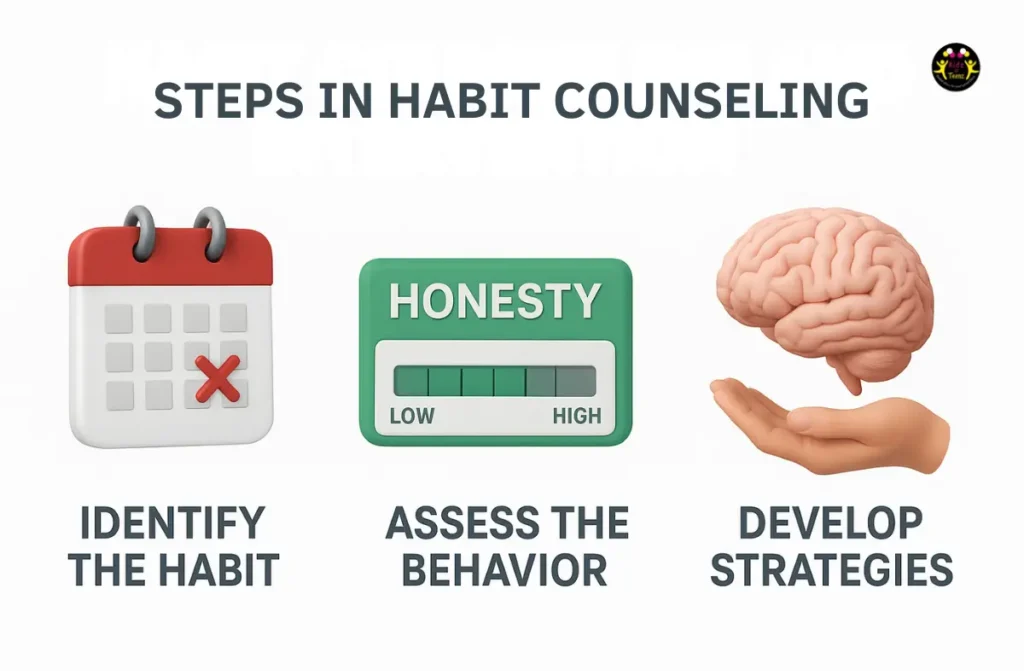Habit counseling and intervention play a vital role in ensuring healthy oral and overall well-being in children and teenagers, especially when supported through Habit Counseling and Intervention in Chennai. Certain habits, such as thumb-sucking, mouth breathing, or prolonged pacifier use, can negatively impact dental and facial development if not addressed early. Research suggests that prolonged oral habits can lead to misaligned teeth, speech issues, and even breathing difficulties.
Early intervention through professional counseling helps correct these habits gently, ensuring a positive experience for young patients. Additionally, for adolescents who experience tooth loss due to trauma or congenital conditions, advanced dental solutions such as dental implants and Maryland bridges provide effective replacements, restoring both function and confidence. Encouraging early dental Habit Counseling and Intervention promotes lifelong oral health and self-esteem, setting the foundation for a healthy future through Habit Counseling and Intervention in Chennai.

Thumb-Sucking & Pacifier Weaning
Thumb-sucking and pacifier use are natural reflexes in infants, providing comfort and security. However, when these habits continue beyond the age of three or four, they can lead to dental misalignment, bite issues, and speech difficulties in children.
- Effects of Prolonged Thumb-Sucking and Pacifier Use:
- Misalignment of the front teeth, leading to open bites or overbites.
- Changes in the palate shape, which may affect speech development.
- Increased risk of speech impediments, jaw misalignment, and breathing difficulties.
Habit counseling and intervention provides gentle, positive reinforcement techniques to help children transition away from these habits. Strategies include reward systems, habit-breaking appliances, and parental guidance to ensure a smooth weaning process. Encouraging alternative coping mechanisms, such as comfort toys or positive distractions, helps children develop healthier self-soothing methods without impacting their dental health.
Mouth Breathing Correction
Mouth breathing, often caused by allergies, nasal congestion, or structural airway issues, can lead to serious oral and overall health concerns in children and teenagers. Prolonged mouth breathing may result in poor oxygen intake, facial growth abnormalities, and dental misalignment.
- Signs of Mouth Breathing:
- Chronic dry mouth and frequent bad breath.
- Narrow facial structure and long, open-mouth posture.
- Increased risk of misaligned teeth, speech issues, and poor sleep quality.
Early intervention includes diagnosing the root cause, whether allergies, nasal obstructions, or jaw alignment issues, and implementing corrective strategies. Treatment options may involve nasal breathing exercises, orthodontic interventions, myofunctional therapy, or habit-breaking devices. Correcting mouth breathing early ensures better oral health, improved sleep, and enhanced facial development, allowing children to grow with confidence and well-being.
Tongue Thrusting Habit
Tongue thrusting occurs when the tongue pushes forward against the teeth during swallowing or speaking. This habit can interfere with dental alignment, speech clarity, and orthodontic treatments. Early Habit counseling and intervention prevents complications and ensures proper oral development.
- Persistent tongue thrusting can lead to open bites and speech articulation disorders, making it difficult for children to pronounce certain words correctly.
- Myofunctional therapy helps retrain tongue positioning and swallowing patterns, reinforcing proper muscle function and improving speech clarity.
- Parental involvement and reinforcement techniques, such as supervised exercises and reminders, significantly enhance the success rate of habit correction.
The Habit Counseling and Intervention approach includes tongue exercises, habit awareness training, and the use of orthodontic appliances in severe cases. Speech therapy may also be integrated for children experiencing pronunciation difficulties. Identifying the underlying causes and addressing them through structured interventions leads to effective habit elimination.
Nail Biting Habit
Nail biting is a common stress-related habit that can lead to dental problems, infections, and self-esteem issues. Many children and teenagers engage in this behavior unconsciously, making intervention strategies crucial for habit correction.
- Nail biting may increase the risk of oral infections and dental damage, as bacteria and germs easily transfer from hands to the mouth.
- Behavioral therapy techniques, such as habit reversal training and mindfulness exercises, are highly effective in breaking the nail-biting cycle.
- Stress management and alternative coping strategies, including relaxation exercises and the use of fidget tools, help reduce the urge to bite nails.
Counseling interventions include awareness techniques, positive reinforcement, and the introduction of substitute habits such as fidget tools. Identifying stress triggers and addressing them through relaxation techniques ensures lasting results. Encouraging self-monitoring helps children and teenagers actively participate in breaking the habit.
Conclusion
Habit Counseling and Intervention and dental interventions play a crucial role in ensuring positive oral health development in children and teenagers, particularly when supported through Habit Counseling and Intervention in Chennai. Early guidance in thumb-sucking cessation, mouth breathing correction, and dental replacement solutions helps prevent future complications. Temporary restorations such as Maryland bridges provide an effective solution for teenagers, while dental implants offer long-term benefits when jaw growth is complete.
Encouraging healthy habits and timely interventions allows young patients to maintain a confident smile and optimal dental health throughout their developmental years. Professional guidance ensures that children and adolescents receive the best possible care, strengthening their long-term well-being and self-esteem through Habit Counseling and Intervention in Chennai.





